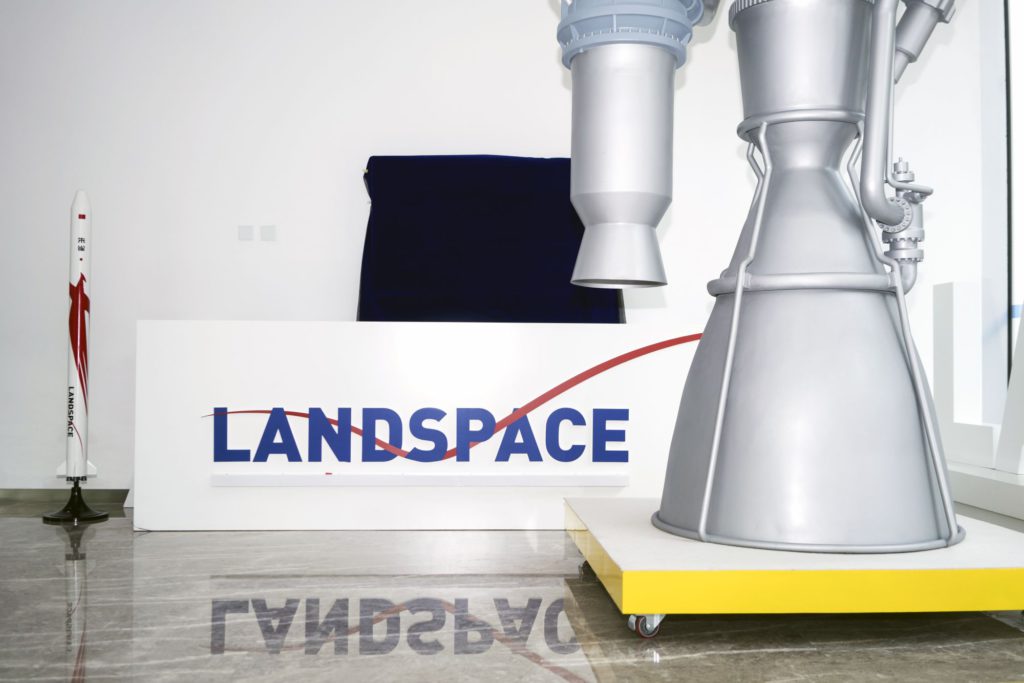A Chinese startup seeking to be the country’s answer to SpaceX is preparing a satellite launch that could beat Elon Musk’s company and other rivals by relying on the next generation of rocket fuel.
(Bloomberg) — A Chinese startup seeking to be the country’s answer to SpaceX is preparing a satellite launch that could beat Elon Musk’s company and other rivals by relying on the next generation of rocket fuel.
LandSpace Technology Corp. expected to launch an uncrewed rocket that burns a combination of liquid methane and liquid oxygen to put its payload into orbit on Wednesday, according to a person familiar with the matter. By Wednesday evening in China, it wasn’t clear if the launch had taken place, or if it had been successful.
SpaceX and others have been developing rockets that can use methane-based fuel, thanks to its potential to be cleaner and safer than solid propellants, liquid hydrogen and other fuels currently used.
To date, no company has used methane to send a satellite or astronauts into orbit. A successful launch by LandSpace would provide the Beijing-based company with bragging rights and boost President Xi Jinping’s strategy to have China eventually challenge the US as the dominant power in space.
“What it tells us is that China has had an extremely rapid evolution in its technological capabilities,” said Matija Renčelj, a research fellow at the European Space Policy Institute in Vienna, thanks in part to “the financial and political support that it is giving to its space sector and its space program.”
Since its founding in 2015 by Zhang Changwu, LandSpace has raised at least 2.1 billion yuan ($300 million) from the government-backed China SME Development Fund as well as private-sector Chinese investors such as Sequoia China and Matrix Partners China, according to statements from the company.
LandSpace’s first launch attempt, using a more conventional solid propellant, failed in 2018. Since then, the company has focused on leapfrogging to more advanced technology using methane for its engines.
“It is a historic opportunity for the new entrants in China’s aerospace industry,” Zhang said in an interview with China-based Economic View in November. The whole development process was “extremely difficult,” he said.
Xi’s government opened the space industry to private investment in 2014.
China’s space program has notched many accomplishments since then, most recently sending three astronauts to the newly completed Chinese space station in late November. In 2019, China was the first to send a probe to land on the far side of the moon and last year became only the second country, after the US, to successfully place a rover on Mars.
China’s startups haven’t come close to delivering such impressive results, though. Having begun much later than the nation’s state-run space agency, the private-sector companies have so far just managed a few orbital launches. Nevertheless, Chang Young-keun, a professor of aerospace and mechanical engineering at Korea Aerospace University near Seoul, said there’s reason for optimism about their potential.
“China has at least 20 great startups trying to develop rockets at low costs,” Chang said.
Beijing Interstellar Glory Space Technology Ltd., which like LandSpace is backed by Sequoia China and Matrix Partners China, has received at least 1.9 billion yuan in investments and is working on developing a methane-fueled rocket, according to the company’s website.
The company, known as iSpace, has suffered several launch failures of its solid-propellant rockets, the most recent on May 13, with the Xinhua news agency reporting that “abnormal performance was identified during the flight of the rocket.”
Rocket engine maker JiuZhou Cloud Arrow (Beijing) Space Technology Co., founded in 2017 and backed by FreeS Fund, is also developing liquid oxygen/methane engines.
Some in the Chinese space industry argue that rocket startups would be better off sticking with the model set by SpaceX by first focusing their efforts on developing reusable rockets burning kerosene and saving methane for later.
That’s the strategy of Deep Blue Aerospace, founded in 2016, which in May sent a kerosene-fueled rocket to a height of one kilometer and then safely conducted a vertical landing.
“We followed SpaceX’s path,” said Huo Liang, founder and CEO of Deep Blue, “and want to repeat what the industry pioneer has achieved.”
Still, for Chinese and foreign companies hoping to make rocket launches routine, methane has significant advantages.
The compound is plentiful on Mars, and crewed missions to the red planet in the future could conceivably take advantage of Martian methane to fuel trips back to Earth, said Chang. Burning methane also creates less soot than kerosene, another liquid-fuel option, making cleanup after a mission easier, said Martin Ross, an atmospheric scientist at the Aerospace Corp., a non-profit in El Segundo, California.
“Methane is so simple. You can make it in the laboratory and you can make it in a factory, presumably with renewable electricity,” he said. “So with methane we could be moving to a regime where rocket fuels are sustainable.”
–With assistance from Heejin Kim and Loren Grush.
(Updates to say rocket’s status is unknown in second paragraph.)
More stories like this are available on bloomberg.com
©2022 Bloomberg L.P.










